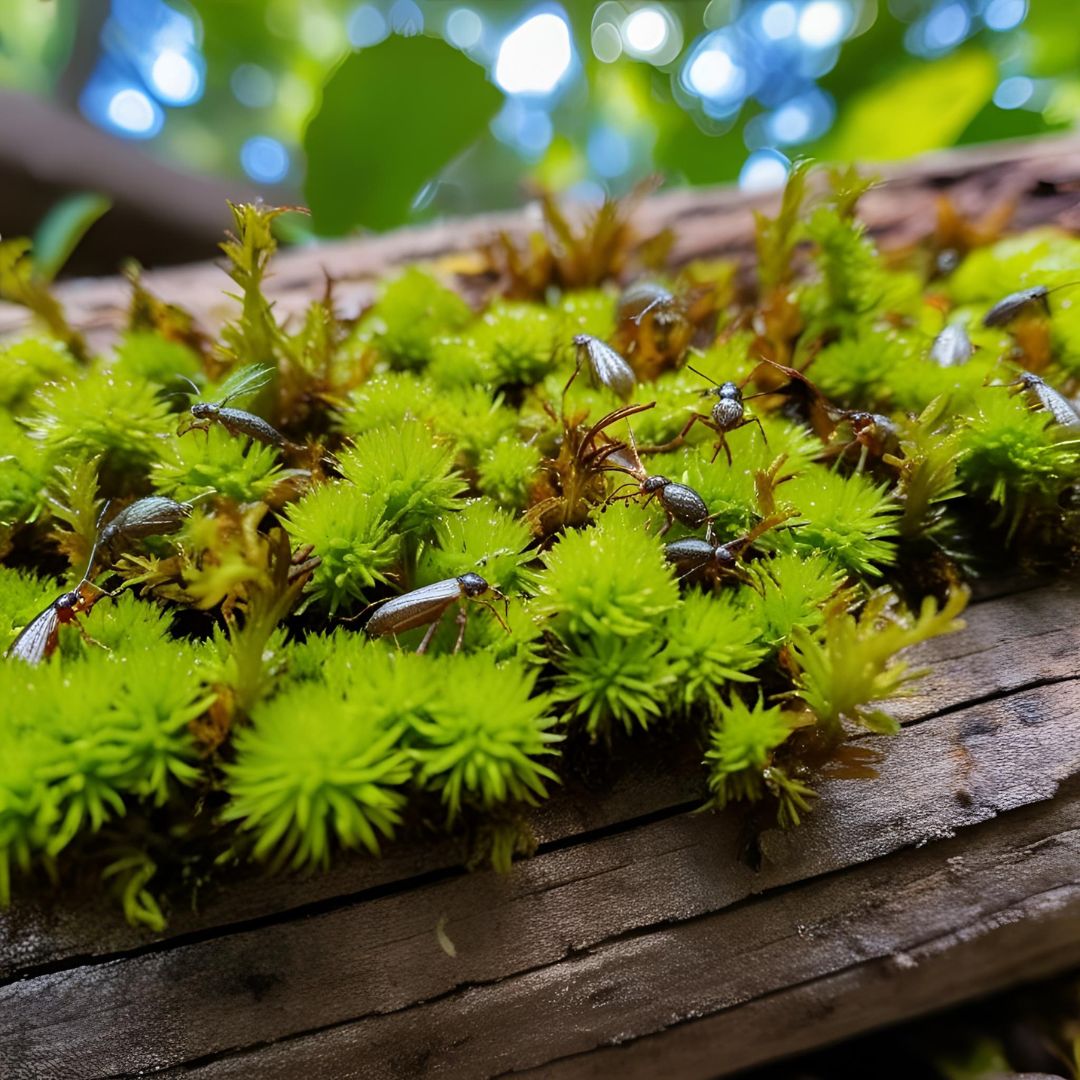Small Spaces, Big Roles
Imagine an entire forest fitting beneath a single stone. Picture a complete ecosystem hiding inside the bark of a tree. These are micro-habitats—tiny universes often overlooked by the human eye but crucial for sustaining vibrant biodiversity. While occupying minimal space, they play enormous ecological roles. Natural micro-habitats serve as life capsules, offering shelter, food, and the precise conditions that many species need to survive—species that couldn’t thrive in more exposed or generalized environments.
Where Life Hides
These miniature environments can be found just about anywhere: among fallen forest leaves, inside a desert cactus, under a backyard rock, or even in the cracks of an urban sidewalk. What makes them fascinating is their ability to support life, even under extreme or seemingly lifeless conditions. Within these micro-spaces, organisms like mosses, lichens, insects, spiders, microorganisms, and young amphibians thrive. In many ways, they are truly tiny universes beneath a leaf.
Connections to Larger Ecosystems
Moreover, micro-habitats do not function in isolation. Frequently, they act as essential connectors within broader ecosystems. A rotting log, for example, might seem like mere debris—but it houses fungi recycling nutrients, insects breaking down wood, and predators that keep smaller populations in check. This entire process influences soil quality, plant growth nearby, and even the population balance of birds and mammals in the area.
The Impact of Environmental Change
This hidden complexity makes micro-habitats vital. As deforestation, urbanization, and climate change alter larger habitats, these micro-environments become critical zones of resistance and adaptation. Many pollinating insects rely on specific microclimates found in leaf litter, tree bark crevices, or hollow logs. When these small refuges disappear, a silent break occurs in the ecological chain that often goes unnoticed until the effects become widespread.
Mini Forests and Natural Laboratories
Take moss, for example—it forms mini-forests on rocks and logs. For the tiny arthropods living there, moss colonies offer everything: protection from sunlight, consistent moisture, food, and shelter from predators. The same applies to temporary water bodies, such as rain-filled rock holes, where tadpoles, aquatic insects, and even small fish complete life cycles before the water evaporates. These invisible ecosystems are not just natural curiosities; they are living laboratories of survival and adaptation.
Life Between Concrete Walls
What about cities? Even in urban environments, micro-habitats emerge in sidewalk cracks, neglected flowerbeds, and overgrown walls. Tiny pockets where seeds sprout, fungi grow, and ants build colonies. These urban nature fragments help cool the area, filter rainwater, control pests, and improve air quality. The microscopic biodiversity present in these hidden corners contributes to environmental balance—even among asphalt and steel.
The Value of Quiet Preservation
Overlooking micro-habitats means neglecting the foundation of many ecosystems. It’s like trying to understand a forest without considering its roots. Recent ecological research shows that protecting these small-scale habitats is just as important as conserving entire forests. Endemic species—those found nowhere else—often depend solely on these micro-environments. The loss of just one micro-habitat can mean the quiet extinction of a species before science ever identifies it.
How to Protect Invisible Ecosystems
The good news is that protecting micro-habitats can be relatively simple. Actions such as avoiding excessive pesticide use, leaving leaf litter and branches on garden soil, preserving native vegetation, and not removing fallen logs during nature walks help maintain these mini-ecosystems. Similarly, including micro-habitat observation in environmental education programs can spark curiosity and inspire deeper connection to nature through the smallest details.
Tiny Worlds, Major Discoveries
Beyond their ecological role, micro-habitats offer scientific and even medicinal value. Many antibiotic compounds, for instance, were discovered in fungi and bacteria that thrive in rotting wood or moist forest soil. Each tiny world under a leaf may hold the key to discoveries that benefit humans in surprising ways.
The Power of Looking Closer
As we begin to explore and appreciate these spaces, it becomes clear that micro-habitats are not just small—they are essential. In times of climate crisis and biodiversity loss, looking closer at the tiniest environments might be one of the most powerful forms of planetary protection. The secret to sustainability may lie in the unseen details—in the miniature forests sustaining life quietly but profoundly.





